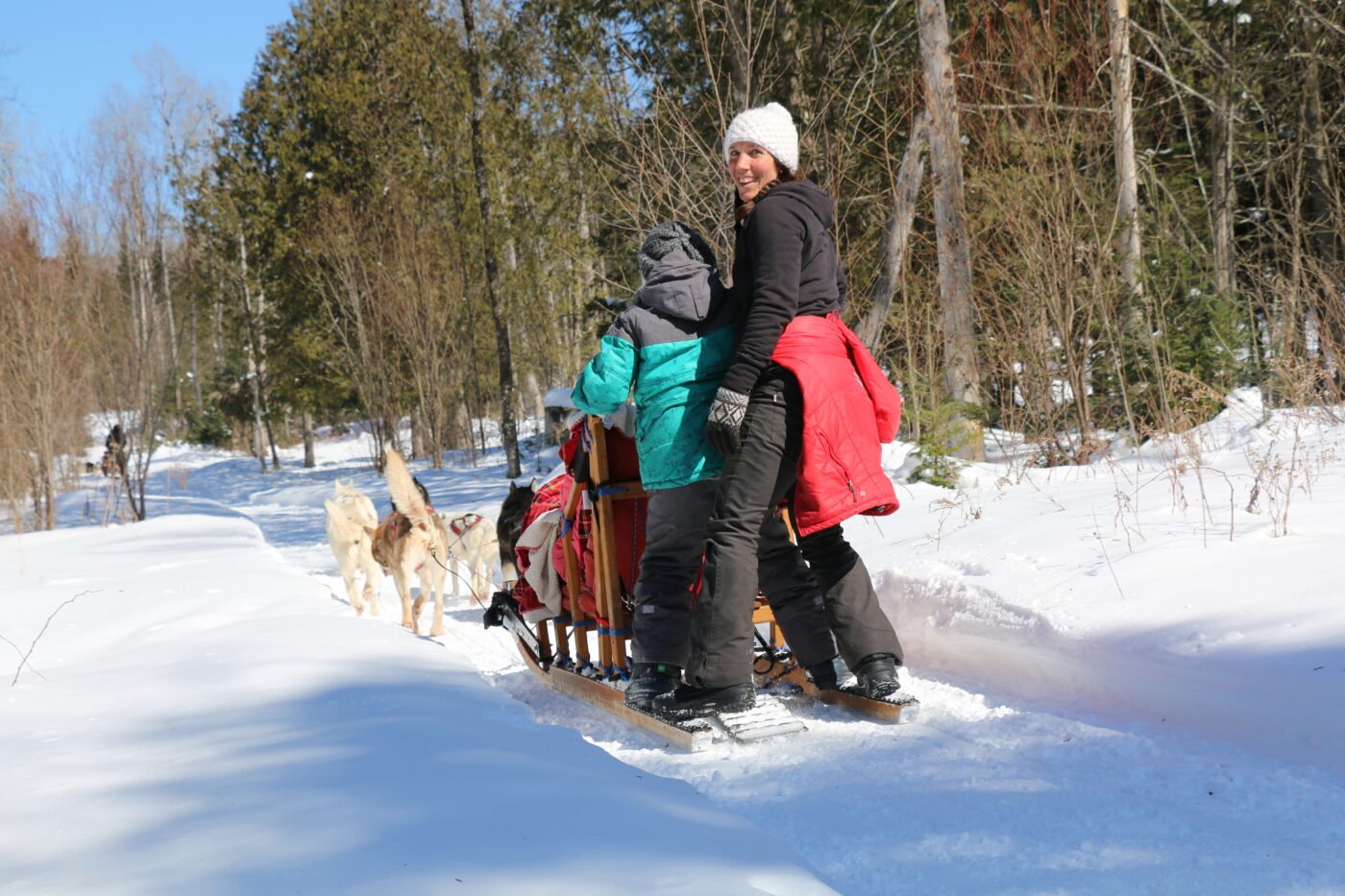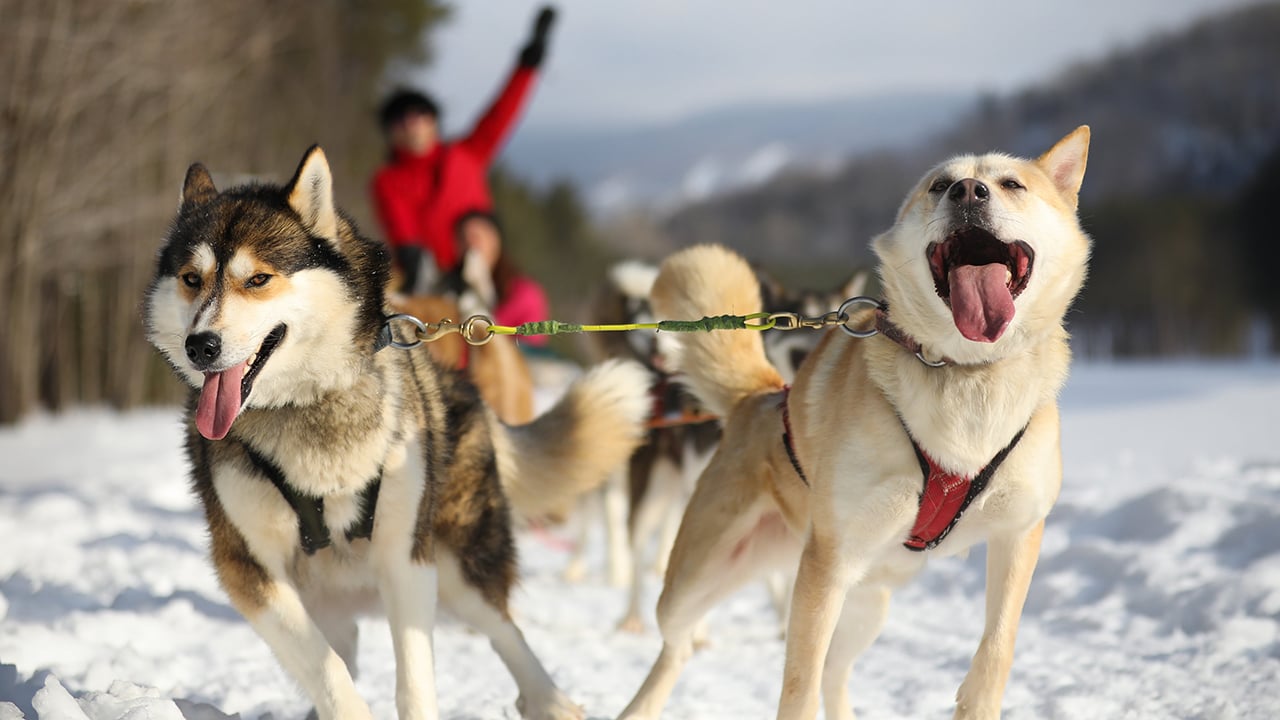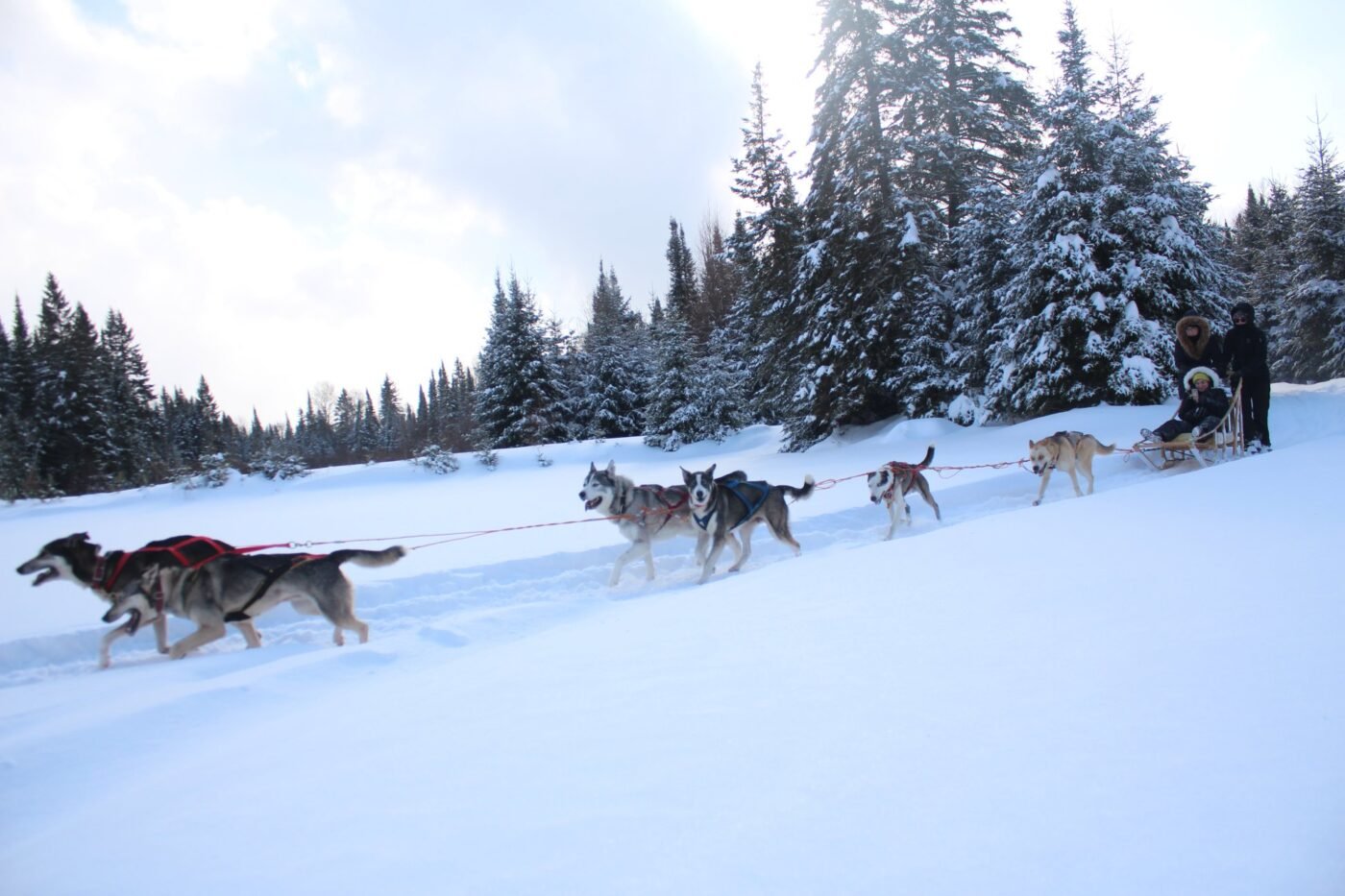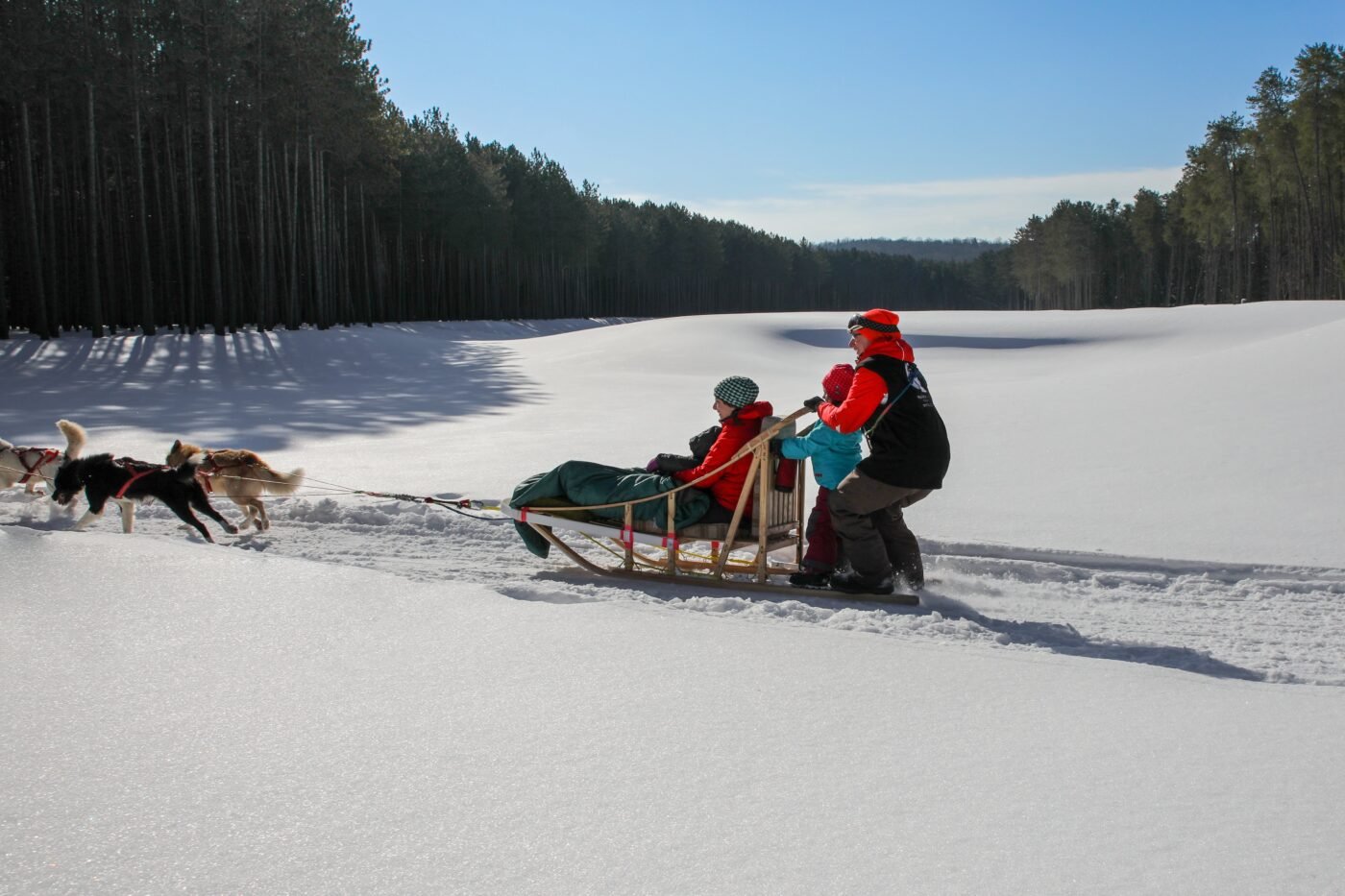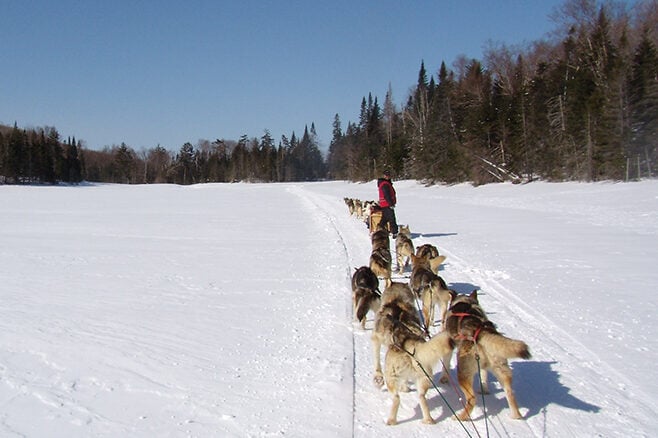Preparing for a dogsledding excursion in Mont-Tremblant, requires strategic dressing to combat the chilly weather and ensure a comfortable and enjoyable experience.
Layering for Comfort and Warmth
Layering is key in Mont-Tremblant’s winter climate, especially between December and March. Start with a moisture-wicking base layer to keep sweat away from the skin. Add insulating layers like fleece or wool for warmth. Drivers (mushers) will be using the foot brake which kicks up snow onto your pants. A waterproof and windproof outer layer, such as a ski jacket and pants, offers protection against snow and cold winds.
Insulated Footwear and Accessories
Its best to wear insulated and waterproof snow boots to keep feet warm and dry. Thick, moisture-wicking socks are essential to maintain warmth. Don’t forget gloves or mittens designed for cold weather, along with a cozy hat or tuque to retain heat. Neck gaiters or scarves can offer additional protection against biting winds. If you are missing anything, please ask. Ski helmets, if you have one, are also recommended as they are warmer and provide extra protection.
Weather Expectations in Mont-Tremblant
Mont-Tremblant experiences a typical Canadian winter, with temperatures ranging from approximately -13°F to 23°F (-25°C to -5°C) during the peak dogsledding season. Expect occasional snowfall and potentially windy conditions, contributing to a significant chill factor. Weather conditions can vary, so it’s advisable to check forecasts before heading out.
Adapting to Changing Conditions
Be prepared for fluctuating weather. Dressing in layers allows adjustment as temperatures change throughout the day. On colder days, consider adding extra insulation or protective outer layers. Ski goggles can shield your eyes from wind and blowing snow, enhancing visibility during your dogsledding adventure.
Drivers will sometimes be standing still and sometimes will be running along the sled. By dressing appropriately in layers and preparing for Mont-Tremblant’s winter weather, participants can embrace the exhilarating dogsledding experience comfortably, allowing them to focus on the breathtaking scenery and the excitement of the ride.

